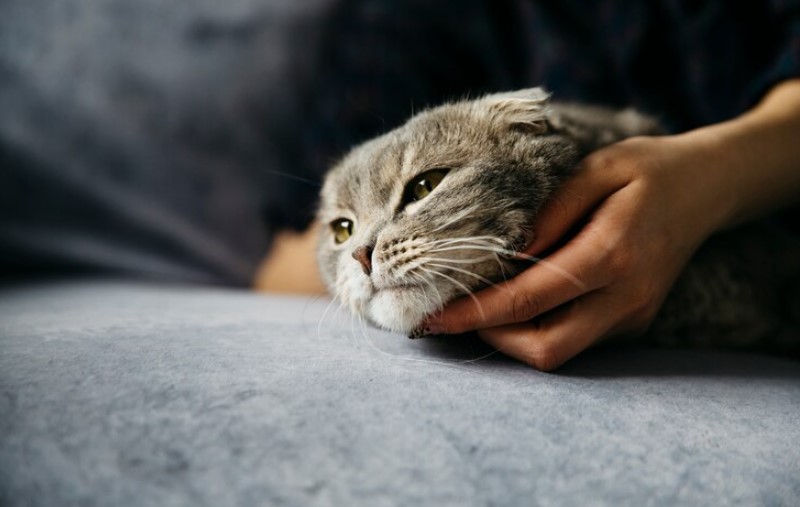Cats, known for their independent nature, also possess a capacity for deep emotional connections with humans and other pets in their household. Understanding their emotional well-being, including how they experience grief and depression, is crucial for providing them with compassionate care. This article explores the complex emotions of cats, from mourning the loss of a companion to the signs and causes of depression, and offers practical insights into nurturing their mental health.
Can Cats Get Sad When Another Cat Dies?
Cats can form strong emotional bonds not only with humans but also with other pets in the household. When a companion cat passes away, the surviving cat may feel sadness and grief. Signs of mourning include spending more time alone, eating less temporarily, meowing more than usual, searching for the lost companion, and changes in their daily routines.
During this time, it’s important for cat owners to provide comfort and reassurance. Keeping a consistent routine and showing extra affection can help the grieving cat adjust and begin to heal emotionally.
Signs and Symptoms of Depression in Cats
Depression in cats can manifest through a variety of behavioral changes. These signs may include:
- Decreased Appetite: A noticeable reduction in eating habits or interest in food.
- Increased Sleeping: Spending more time sleeping or appearing lethargic.
- Loss of Interest in Play: Ignoring toys or previously enjoyed activities.
- Decreased Grooming: Neglecting self-care, leading to a dull coat or matting.
- Reduced Social Interaction: Avoiding interactions with other pets or family members.
- Increased Vocalization: Excessive meowing or vocalizing more than usual.
- Changes in Litter Box Habits: Inconsistent use of the litter box or house soiling.
- Changes in Outdoor Behavior: If allowed outdoors, reluctance to go outside or reduced exploration.
These behaviors, if observed consistently and over a prolonged period, may indicate that a cat is experiencing depression.
Causes of Depression in Cats
Several factors can contribute to the onset of depression in cats:
- Loss of a Family Member: Cats can grieve the loss of human or animal companions they were bonded with.
- Moving to a New House: Environmental changes and unfamiliar surroundings can be stressful for cats.
- Changes in Family’s Schedule: Alterations in routines or prolonged absence of caregivers can affect a cat’s mental state.
- Changes in Physical Health: Illnesses such as arthritis or sudden disabilities can lead to decreased mobility and enrichment.
Understanding these triggers can help in identifying the root cause of a cat’s depression and implementing appropriate interventions.

Cats and Schizophrenia
While less common and more complex to diagnose, there is some recognition in veterinary science that cats can exhibit behaviors akin to schizophrenia. This condition, characterized by disordered thinking and perception, may manifest through unusual behaviors or altered responses to stimuli. Veterinary consultation and evaluation are necessary for accurate diagnosis and management.
How to Make Your Depressed Cat Happy
Addressing depression in cats involves creating a supportive environment and engaging in activities that promote mental stimulation and emotional well-being:
- Quality Time and Affection: Spend dedicated time petting, cuddling, or grooming your cat.
- Introducing New Activities: Offer new toys, engage in interactive play sessions, or provide puzzle toys that encourage mental engagement.
- Dietary Considerations: Consult with a veterinarian to explore dietary adjustments that may improve your cat’s mood and overall health.
- Creating a Soothing Environment: Play calming music designed for cats, provide hiding spots or elevated perches, and maintain a consistent daily routine.
These efforts can help alleviate depressive symptoms and improve your cat’s overall quality of life.
Is Yelling at Your Cat Abuse?
Yelling at your cat can be considered a form of emotional stress for them, but whether it constitutes abuse depends on the context and frequency. Cats are sensitive to loud noises and harsh tones, so yelling can cause fear, anxiety, or even behavioral issues over time. It’s important to communicate with your cat calmly and patiently to build trust and avoid causing undue stress. Consistent positive reinforcement and understanding your cat’s behaviors can create a supportive environment where they feel safe and loved.
Conclusion
Cats, like humans, can experience a range of emotions that impact their well-being. Recognizing signs of depression and grief in cats, such as changes in behavior and decreased interest in activities, allows us to intervene with understanding and support. By providing a stable environment, engaging in interactive play, renaming or calling from different names, and maintaining regular veterinary care, we can enhance their quality of life and foster a lasting bond based on trust and compassion. Understanding and addressing their emotional needs enriches both their lives and ours as caring companions



